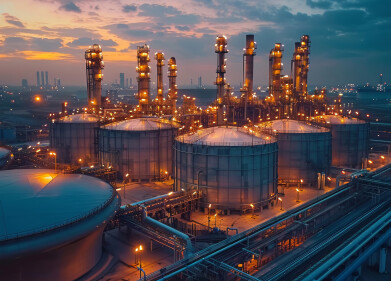Industrial Emissions
Concrete Is Responsible for 8 Percent of CO2 Emissions
Jan 28 2019
The need to monitor and reduce our carbon footprint has been well-documented and publicised for many years now. But while the chief culprits of vehicular emissions, fossil fuel power plants and agriculture regularly hog the headlines, another contributing factor has comparatively flown under the radar – concrete.
The most widely-used manmade substance on the planet, and the second most-consumed resource behind water, concrete has been used in building projects all over the world for centuries. However, new research from non-profit thinktank Chatham House has revealed that concrete comprises 8% of all carbon emissions on the planet.
Clinkers to blame
The principal ingredient in concrete is cement, four billion tonnes of which are produced every year. Cement itself is comprised mostly of clinker, a substance made by heating crushed limestone and clay at high temperatures. This process is called calcination and results in the production of much CO2 as a by-product.
Indeed, it’s estimated that up to 90% of the emissions produced when making concrete can be attributed to clinker. In turn, this means that concrete is responsible for a higher percentage of CO2 emissions than aviation (2.5%) and not far behind agriculture (12%). Indeed, if concrete were a country, it would be the third biggest emitter of CO2 on the planet, behind only China and the USA… and that’s before the mercury emissions from cement plants are even considered.
A necessary evil?
While trust and reliability in emissions monitoring has steadily increased over recent years, its results have highlighted how certain industries (such as cement manufacturing) may be more polluting than previously anticipated. This does of course provide valuable info about where the construction industry needs to concentrate its efforts, but it poses serious questions about how to switch from a substance that has become virtually irreplaceable in modern building methods.
“It's affordable, you can produce it almost anywhere and it has all the right structural qualities that you want to build with for a durable building or for infrastructure,” explained Felix Preston, co-author of the study. “Building without concrete, although it is possible, is challenging.”
Eco-friendly alternatives
It’s believed that optimising the energy efficiency of the concrete industry can help reduce its carbon emissions by up to 8%, while switching to greener fuel sources could bring them down by a further 40% if employed on an industry-wide scale. The potential of carbon capture and storage (CCS) could also be important in limiting emissions, but as yet is far away from being financially and practically viable.
Instead, a more effective course of action could be turn to alternative types of cement. One such possibility is the kind of bio-concrete created by North Carolina start-up BioMason. By injecting moulds of sand with trillions of bacteria contained in microorganisms, the founders of the company believe they have struck upon a more sustainability form of building bricks. Whatever the solution, the Chatham House report recommends that the concrete industry must reduce its CO2 emissions by at least 16% before 2030, or else risk failing to meet its COP21 obligations.
Digital Edition
AET 28.4 Oct/Nov 2024
November 2024
Gas Detection - Go from lagging to leading: why investment in gas detection makes sense Air Monitoring - Swirl and vortex meters will aid green hydrogen production - Beyond the Stack: Emi...
View all digital editions
Events
Nov 26 2024 Paris, France
Nov 27 2024 Istanbul, Turkey
H2O Accadueo International Water Exhibition
Nov 27 2024 Bari, Italy
Biogas Convention & Trade Fair 2024
Nov 27 2024 Hanover, Germany
Dec 02 2024 London, UK












.jpg)






